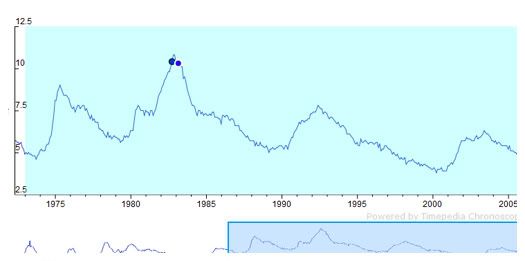Mar
Open Source Actionscript 3 Physics Engine – Box2D
Box2D is an open source physics engine written primarily for games. As the name suggests, Box2D is a purely 2D engine. However, Box2D has grown beyond it’s humble box simulating roots, and can now handle convex polygons and other shapes.

View Demo
Website: http://www.box2d.org
Download Code: http://sourceforge.net/projects/box2d
Categories:
Tags:
Mar
25+ Free Image Galleries & Slideshows Script Roundup
Photoviewer based on YUI Library
Photoviewer is a YUI based Lightbox. Its a lightweight and handy tool to create your own gallery. It supports multiple galleries.

Features
- Leverage the Flickr API for better flexibility
- Load your Flickr RSS feed
- Easily skinned for customization
- Lightbox functionality, modal dialog and auto-centered panels
- Slide show configuration models
- Cross-browser, cross-platform compatibility
- Create galleries using existing HTML
- Create galleries using remote XML files
- Absolute and relative position
- Flexible and robust API
Visit PhotoViewer Website Read the rest of this entry »
Categories:
Tags:
Mar
Make Your Web Life Easier With Ubiquity – An Innovative Firefox Plugin

Ubiquity is a very useful and user friendly Firefox plugin to make your life easier. This innovative plugin helps when you:
- Are planning to have a meeting with your friends
- Want to tell your friends about some new thing
- Want to share your experience
- Want to translate something
- Want to extract something to send
- Are looking to send some a location map
The Problem
You’re writing an email to invite a friend to meet at a local San Francisco restaurant that neither of you has been to. You’d like to include a map. Today, this involves the disjointed tasks of message
composition on a web-mail service, mapping the address on a map site, searching for reviews on the restaurant on a search engine, and finally copying all links into the message being composed. This familiar sequence is an awful lot of clicking, typing, searching, copying, and pasting in order to do a very simple task. And you haven’t even really sent a map or useful reviews—only links to them.
Read the rest of this entry »
Categories:
Tags:
Feb
Open Source Flash Server – Red 5
Red5 is an open source Flash Real Time Messaging Protocol (RTMP) server written in Java. Red5 is considered as a free alternate to Adobe Flash Media Server, and supports many of the same feature sets. It has a few additional feature sets such as the ability to intercept live streams, and the ability to easily plug in other Java libraries such as Hibernate.

Read the rest of this entry »
Categories:
Tags:
Feb
Open Source Library To Programatically Manipulate Video Files
If you’re a Java or a C++ Developer who needs to programatically manipulate video files, either pre-recorded, or live, then Xuggler is for you.
The Xuggler is a free and open-source library for Java or C++ developers that allows you to decode, manipulate, and encode (almost) any type of video file in near real time. It is for programmers who want to add video processing support to their products.

The Xuggler also comes with a Red5 integration library which allows Java developers to modify and re-broadcast live video on the fly using Red5. This means you can write server-side applications that modify video, without any special client software on your customer’s web browsers.
Website: http://www.xuggle.com/xuggler/
Categories:
Tags:
C#, Java, Library, Open Source
Feb
Open Source Free Image Hosting Script
Chevereto is an open-source image hosting script that allows you to install your own image hosting on your server. It installs quickly, requires no database and is configurable. A user friendly and easy interface to fast understanding.

It allows you to resize images, verify its integrity and integrate it with url shorteners like TinyURL. It now has Multilingual support.
Website: http://chevereto.com
Demo: http://demo.chevereto.com
Categories:
Tags:
Feb
Open Source Ticketing System – Request Tracker
Request Tracker is an enterprise-grade ticketing system which enables a group of people to intelligently and efficiently manage tasks, issues, and requests submitted by a community of users.
Written in object-oriented Perl, Request Tracker is a high-level, portable, platform independent system that eases collaboration within organizations and makes it easy for them to take care of their customers.

Request Tracker manages key tasks such as the identification, prioritization, assignment, resolution and notification required by enterprise-critical applications including project management, help desk, NOC ticketing, CRM and software development.
Features
- Track Critical Data
- Convenient for End Users
- Easy to Customize
- Platform Independent
- Open Source
Website: http://www.bestpractical.com/rt
Categories:
Tags:
Feb
Build Rich Mobile & Desktop Applications With Appcelerator
Appcelerator is a fully-integrated platform for building Rich Internet Applications (RIAs). It provides everything you need to build a rich and highly interactive web site or application.

Appcelerator is powered by several powerful capabilities:
- Message Oriented Architecture
- Web Expression Language
- Widget Framework
- Integrated Services Platform
Categories:
Feb
Open Source Image Gallery – Galleriffic
Galleriffic is an open source image gallery based on the popular jQuery library. This gallery has been developed by performance in mind for delivering a high volume of photos.

Features
- Smart image preloading
- Thumbnail navigation
- Slideshow supported
- Events that allow for adding your own custom transition effects
- Support for image captions
- Flexible configuration
- Graceful degradation when javascript is not available
- Support for multiple galleries per page
Website: http://valums.com/javascript-image-galleries
Categories:
Tags:
Feb
Open Source Charting Platform – Chronoscope
Chronoscope is an open source release of a charting and visualization platform for GWT, used as the centerpiece of Timepedia’s website. Chronoscope provides a high performance, cross browser platform for visualizing possibly large and complex datasets. It supports interactive frame rates on data sets with tens of thousands of points by using multiresolution representation and incremental streaming.

When the number of points about to be plotted exceeds a certain heuristic, Chronoscope falls back to a lower resolution representation of the dataset, which can be provided by the user, or automatically calculated by various filtering algorithms. This is similar to mip-mapping techniques commonly used in 3D graphics to reduce bandwidth and decrease aliasing. It also gives non-programmers intuitive controls over almost every aspect of the look of a visualization.
It requires Google Web Toolkit.
Website: http://timepedia.org/chronoscope/
Categories:
Tags:






